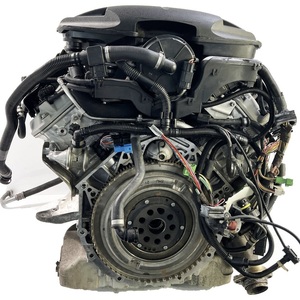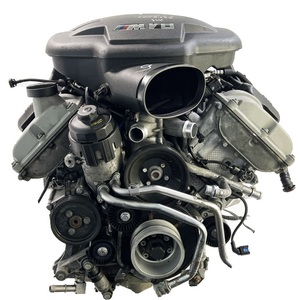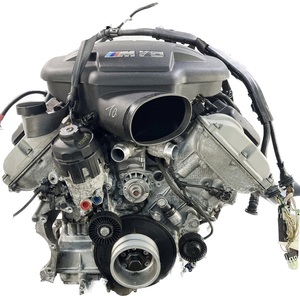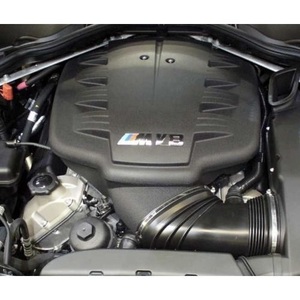
All categories
Featured selections
Trade Assurance
Buyer Central
Help Center
Get the app
Become a supplier

(4120 products available)












































The BMW Z3 is a luxury roadster that represents an entry-level sports car. In the form of both the BMW Z3 1.9L engine and the greater horsepower BMW Z3 2.8 engine version, BMW used diverse variations of the M44 and M52 models. These power units offered a wide capacity range. The M44 engine is a 1.9L Straight-4 unit with 16 valves and variable valve timing manufactured from 1997 to 2000. The M52B28, on the other hand, was a 2.8L Straight-6 engine with also 24 valves and double vanos technology produced from 1996 to 2000. It presented higher power and torque numbers than its predecessor BMW Z3 M50 model. Beyond these variations, other Z3 engines also existed. For example, the BMW M44, which was a variant of the M44 engine specifically targeted at the North American market. Also, the BMW M52B25 was a 2.5L Straight-6 engine variant of the M52 model, which had a similar power unit. The M54 engine series made up a third generation of the M series BMW engines. They included 4-cylinder and 6-cylinder engines. The M54B30 was a 3.0L Straight-6 engine with 24 valves, and the M54B25 was a 2.5L Straight-6 engine. The M57 was a straight-six turbo-diesel engine. They were manufactured from 1998 to 2007.
Generally, all BMW Z3 engines were designed to deliver optimal performance and fuel economy. At the same time, they provided a fun driving experience for passengers. Though the M44 and M52 models prevailed, some variants or other modifications also existed. For example, engines for E-Z3 and Z3b models could deliver from 84 HP to 320 HP. To fulfill the needs of Z3 roads and promote a dynamic driving experience, M44 and M52 models remain the most common ones.
As detailed in the table above, the BMW Z3 engines have various specifications depending on the model. Common specifications include the three engine sizes, the six-cylinder M variant, and the horsepower and torque.
Like other car engines, the BMW Z3 engine requires regular maintenance to run smoothly. Here are some standard maintenance tips.
Restoration of classic BMW Z3 roadsters:
The BMW Z3 was produced from 1995 to 2002, making it a somewhat older model. As a result, there has been a constant need to restore the roadster to its former glory. This has led to a demand for the engine of the BMW Z3, as many individuals are seeking to revive their antique sports cars. It is not uncommon for an entire engine to be replaced, or sometimes just specific components, such as the cylinder head or the timing belt.
Custom BMW Z3 engine swaps:
Some car enthusiasts are increasingly desiring to modify their vehicles for improved performance or to endow their car with a distinctive personality. As a result, they may choose to swap out the existing engine with a more potent one. This could include replacing the 1.9-liter BMW Z3 engine with the more powerful 2.8-liter variant, or even an entirely different make and model motor. Regardless, there will be a demand for BMW Z3 engine parts.
Racing and motorsport applications:
Although the BMW Z3 is not the most common choice for racing and motorsport competitions, some individuals enjoy participating in track days, amateur races, or sprint events. As a result, this will create a need for BMW Z3 engine components to enhance its performance and guarantee its reliability during racing endeavors.
BMW Z3 engine upgrades and tuning:
A segment of BMW Z3 owners are car enthusiasts who desire to boost their vehicle's power and acceleration. They may choose to install performance upgrades, such as sport exhaust systems, high-flow air intakes, or reprogrammed engine control units (ECUs). All of these upgrading efforts will require the use of more BMW Z3 engine components.
New vs. Used:
Choosing to buy a new BMW Z3 engine or a used one is perhaps the most crucial decision that car owners or dealers will have to make. A new engine offers the benefit of unworn parts, a full warranty, and improved fuel efficiency. However, the cost will be significantly higher. A refurbished or used BMW Z3 engine is more affordable. With an engine rebuild service, buyers can be sure that the engine will work well for some time.
Availability of Parts:
Before choosing a particular type of BMW Z3 engine, check the availability of parts. Some engines have become obsolete over the years. It may be challenging to find parts like the water pump, ignition coil, or intake manifold. Selecting an engine with readily available parts will ensure it can be serviced and maintained over time, reducing the risk of costly downtime.
Long-Term Maintenance:
The long-term maintenance cost of the engine will be vital to its overall performance. Consider the type of fuel the engine will need and its efficiency. Some engines are rather high-maintenance and need specialized services that may not be available in all locations. Selecting an engine that is easy to maintain will ensure peace of mind for many years to come.
Modification Potential:
Car enthusiasts may seek out an engine with a good modification potential. Tuning companies prefer the 2.8 BMW Z3 engine, as they can boost its performance by upgrading parts like the intake system, exhaust system, or engine management system. Tuning an engine for better performance or higher efficiency is easier in some models than others.
Q1: What is the horsepower of the BMW Z3 1.9 engine?
A1: The BMW Z3 1.9 engine has a horsepower of 138.
Q2: Can a BMW engine number tell the engine type?
A2: Yes, the BMW engine number format can help identify the engine type and capacity. In most cases, the engine number will match the car's VIN.
Q3: Was the BMW Z3 a good used car?
A3: The BMW Z3 is considered a good used car because it is fun to drive, looks stylish, and has decent reliability. However, like any used car, the specific condition of the vehicle will vary, and a thorough inspection is essential before buying.
Q4: What are common problems with the BMW Z3?
A4: The common problems with the BMW Z3 include rust issues, oil leaks, malfunctioning electrical systems, and wear-out suspension components. Regular maintenance can help reduce these issues.